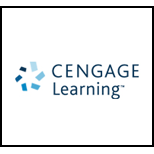
PAC MindLink MindTap Enh Discovering Computers & Microsoft Office 2013: Fundamental
13th Edition
ISBN: 9781305492394
Author: Cenage Learning
Publisher: Cengage Learning
expand_more
expand_more
format_list_bulleted
Expert Solution & Answer
Chapter 5, Problem 3CTQ
Explanation of Solution
Disaster recovery plan:
Technology plays a vital role in every aspect of the present day business process. When the technology is disturbed by an unexpected disaster, a disaster recovery plan is the only key to minimize the damage and restore the work environment as fast as possible.
A disaster recovery plan must be included in firm’s business continuity plan as a set of actions to mitigate downtime by focusing on the efficient ways to recover.
A good disaster recovery plan must include the following:
- Emergency strategies
- Backup actions
- Recovery plans
- Test plan
Emergency strategies:
- First identify the important critical business processes.
- List business processes that are imperative to firms continued business.
- Estimate how long firm can survive without crucial business process.
- Label dependencies.
- Summarize all the applications that business processes rely upon the most.
- Diagnose applications maximum downtime consequently.
- Define important applications.
- Make a list of important application that has to be restored immediately.
- Do a business impact analysis.
- Conducting a business impact analysis enables firm to measure the impact of downtime, define availability requirements, estimate downtime costs, and identify compliance levels...
Explanation of Solution
Staff member roles for each phase of the plan:
- Information Technology (IT) specialist takes care of the IT related devices such as desktops, laptop, hard disk drives, routers and printers...
Expert Solution & Answer
Trending nowThis is a popular solution!

Students have asked these similar questions
The partial sums remain the same no matter what indexing we done to s
artial sum of each series
onverges,
*
+
s of each series to
the series or show
12. (1)+(0)+(0)+(+1)+
17,
" (F) + (F) + (F)(F)(-
18.
19. 1
#20.
(三)+(三)-(三)+(3)
20 (9)-(0)-(0)--
10
+1
2.1+(男)+(男)+(罰)+(鄂
9
T29
x222-끝+1-23 + -....
Repeating Decimals
64
Express each of the numbers in Exercises 23-30 as the m
integers.
23. 0.23 = 0.23 23 23...
24. 0.234 = 0.234 234 234.
25. 0.7 = 0.7777...
26. 0.d = 0.dddd...
where d is a digit
natio of own
s converges or
* 27. 0.06 = 0.06666..
28. 1.4141.414 414 414...
29. 1.24123 = 1.24 123 123 123...
30. 3.142857 = 3.142857 142857.
Using the ath-Term Test
In Exercises 31-38, use the ath-Term Test for divergence to show that
the series is divergent, or state that the test is inconclusive
8
CPS 2231 Computer Programming
Homework #3
Due Date: Posted on Canvas
1. Provide answers to the following Check Point Questions from our textbook (5 points):
a. How do you define a class? How do you define a class in Eclipse?
b. How do you declare an object's reference variable (Hint: object's reference variable
is the name of that object)?
c. How do you create an object?
d. What are the differences between constructors and regular methods?
e. Explain why we need classes and objects in Java programming.
2. Write the Account class. The UML diagram of the class is represented below (10 points):
Account
id: int = 0
- balance: double = 0
- annualInterestRate: double = 0.02
- dateCreated: java.util.Date
+ Account()
+
Account(id: int, balance: double)
+ getId(): int
+ setId(newId: int): void
+ getBalance(): double
+ setBalance(newBalance: double): void
+
getAnnualInterestRate(): double
+ setAnnualInterest Rate (newRate: double): void
+ toString(): String
+ getDataCreated(): java.util.Date
+…
THIS IS NOT A GRADING ASSIGNMENT:
Please only do lab 2.2 (bottom part of the first picture)
For that Lab 2.2 do:
*Part 1 (do the CODE, that's super important I need it)
*Part 2
*Part 3
I also attached Section 2.5.2 which is part of the step 1 so you can read what is it about.
Thank you!
Chapter 5 Solutions
PAC MindLink MindTap Enh Discovering Computers & Microsoft Office 2013: Fundamental
Ch. 5 - Prob. 1SGCh. 5 - Prob. 2SGCh. 5 - Prob. 3SGCh. 5 - Prob. 4SGCh. 5 - Prob. 5SGCh. 5 - Prob. 6SGCh. 5 - Prob. 7SGCh. 5 - Prob. 8SGCh. 5 - Prob. 9SGCh. 5 - Prob. 10SG
Ch. 5 - Prob. 11SGCh. 5 - Prob. 12SGCh. 5 - Prob. 13SGCh. 5 - Prob. 14SGCh. 5 - Prob. 15SGCh. 5 - Prob. 16SGCh. 5 - Prob. 17SGCh. 5 - Prob. 18SGCh. 5 - Prob. 19SGCh. 5 - Prob. 20SGCh. 5 - Prob. 21SGCh. 5 - Prob. 22SGCh. 5 - Prob. 23SGCh. 5 - Prob. 24SGCh. 5 - Prob. 25SGCh. 5 - Prob. 26SGCh. 5 - Prob. 27SGCh. 5 - Prob. 28SGCh. 5 - Prob. 29SGCh. 5 - Prob. 30SGCh. 5 - Prob. 31SGCh. 5 - Prob. 32SGCh. 5 - Prob. 33SGCh. 5 - Prob. 34SGCh. 5 - Prob. 35SGCh. 5 - Prob. 36SGCh. 5 - Prob. 37SGCh. 5 - Prob. 38SGCh. 5 - Prob. 39SGCh. 5 - Prob. 40SGCh. 5 - Prob. 41SGCh. 5 - Prob. 42SGCh. 5 - Prob. 43SGCh. 5 - Prob. 44SGCh. 5 - Prob. 45SGCh. 5 - Prob. 46SGCh. 5 - Prob. 47SGCh. 5 - Prob. 48SGCh. 5 - Prob. 49SGCh. 5 - Prob. 1TFCh. 5 - Prob. 2TFCh. 5 - Prob. 3TFCh. 5 - Prob. 4TFCh. 5 - Prob. 5TFCh. 5 - Prob. 6TFCh. 5 - Prob. 7TFCh. 5 - Prob. 8TFCh. 5 - Prob. 9TFCh. 5 - Prob. 10TFCh. 5 - Prob. 11TFCh. 5 - Prob. 12TFCh. 5 - Prob. 1MCCh. 5 - Prob. 2MCCh. 5 - Prob. 3MCCh. 5 - Prob. 4MCCh. 5 - Prob. 5MCCh. 5 - Prob. 6MCCh. 5 - Prob. 7MCCh. 5 - Prob. 8MCCh. 5 - Prob. 1MCh. 5 - Prob. 2MCh. 5 - Prob. 3MCh. 5 - Prob. 4MCh. 5 - Prob. 5MCh. 5 - Prob. 6MCh. 5 - Prob. 7MCh. 5 - Prob. 8MCh. 5 - Prob. 9MCh. 5 - Prob. 10MCh. 5 - Prob. 2CTCh. 5 - Prob. 3CTCh. 5 - Prob. 4CTCh. 5 - Prob. 5CTCh. 5 - Prob. 6CTCh. 5 - Prob. 7CTCh. 5 - Prob. 8CTCh. 5 - Prob. 9CTCh. 5 - Prob. 10CTCh. 5 - Prob. 11CTCh. 5 - Prob. 12CTCh. 5 - Prob. 13CTCh. 5 - Prob. 14CTCh. 5 - Prob. 15CTCh. 5 - Prob. 16CTCh. 5 - Prob. 17CTCh. 5 - Prob. 18CTCh. 5 - Prob. 19CTCh. 5 - Prob. 20CTCh. 5 - Prob. 21CTCh. 5 - Prob. 22CTCh. 5 - Prob. 23CTCh. 5 - Prob. 24CTCh. 5 - Prob. 25CTCh. 5 - Prob. 26CTCh. 5 - Prob. 27CTCh. 5 - Prob. 28CTCh. 5 - Prob. 29CTCh. 5 - Prob. 1PSCh. 5 - Prob. 2PSCh. 5 - Prob. 3PSCh. 5 - Prob. 4PSCh. 5 - Prob. 5PSCh. 5 - Prob. 6PSCh. 5 - Prob. 7PSCh. 5 - Prob. 8PSCh. 5 - Prob. 9PSCh. 5 - Prob. 10PSCh. 5 - Prob. 11PSCh. 5 - Prob. 1.1ECh. 5 - Prob. 1.2ECh. 5 - Prob. 1.3ECh. 5 - Prob. 2.1ECh. 5 - Prob. 2.2ECh. 5 - Prob. 2.3ECh. 5 - Prob. 3.3ECh. 5 - Prob. 4.1ECh. 5 - Prob. 4.2ECh. 5 - Prob. 4.3ECh. 5 - Prob. 5.1ECh. 5 - Prob. 5.2ECh. 5 - Prob. 5.3ECh. 5 - Prob. 1IRCh. 5 - Prob. 2IRCh. 5 - Prob. 3IRCh. 5 - Prob. 4IRCh. 5 - Prob. 5IRCh. 5 - Prob. 1CTQCh. 5 - Prob. 2CTQCh. 5 - Prob. 3CTQCh. 5 - Prob. 4CTQ
Knowledge Booster
Similar questions
- THIS IS NOT A GRADING ASSIGNMENT: Please only do lab 2.2 (bottom part of the first picture) For that Lab 2.2 do: *Part 1 *Part 2 *Part 3 I also attached Section 2.5.2 which is part of the step 1 so you can read what is it about. Thank you!arrow_forwardcan you please give me: * the code (step 3) *the list file (step 5) *and answer step 6 Thank youarrow_forward# Find the error# Why will the following code not print out a list of contact namesphoneBook = {'Doe, Jane' : '843-000-0000' ,'Doe, John' : '843-111-1111' ,'Smith, Adam' : '843-222-2222' ,'Jobs, Steve' : '999-333-3333' ,}for contact in phoneBook.values():print(contact)arrow_forward
- # Find the error:# The following code creates an empty dictionary and attempts to add a record# Why will the following code not create a new dictionary entry as intended?phoneBook = {}phoneBook{'Jobs, Steve'} = '999-111-1111'arrow_forwardSelect all the possible polar representations of the vector that is obtained from rotating where by Zrot Ź x = 3e² T= 3п 8 Hint: Consider the negative angle that is equivalent to the positive angle of the rotated vector. 0arrow_forwardCharacter Analysis If you have downloaded the source code you will find a file named text.txt on the Chapter 08 folder. Write a program that reads the file's contents and determines the following: The number of uppercase letters in the file The number of lowercase letter in the file The number of digits in the file The number of whitespace characters in the filearrow_forward
- Write a program that reads the text file's contents and calculates and outputs the following in this order: • The number of words in the file • The number of lines in the file • The number of uppercase letters in the file • The number of lowercase letters in the file • The number of digits in the file • The number of letter H's in the file • The number of whitespace characters in the file NOTE: Your program should include at least one try-except error handling statement block. Your program should also validate any input that could cause your program to crash. I'm Henery The Eighth, I Am! Henery The Eighth, I Am, I am!I got married to the widow next door,She's been married seven times before.And ev'ryone was a Henery,She wouldn't have Willie or a Sam.I'm her eighth old man named Henery,Henery the Eighth, I Am!Second verse same as the first!I'm Henery The Eighth, I Am! Henery The Eighth, I Am, I am!I got married to the widow next door,She's been married seven times before.And…arrow_forwardFigure 4-40 Modern Database Management, 13th edition, question 4-53arrow_forwardWhich of the following needs improvement in the dashboard shown? A. Instructional clarity missing for the views B. Filter placed at the top of the dashboard C. Inconsistent use of colors to represent missed goals D. Dashboard title too largearrow_forward
- If we click Show dashboard title in this dashboard, what will the title be?arrow_forwardPlease draw the diagram where it is asked to be drawn. Don't just describe how to do it.arrow_forwardC. Homework Assignment Task: Write a one-page CV using the provided template. Steps: 1. Use the CV guide to structure your CV. 2. Fill in each section with real information about yourself. 3. Format your CV neatly and use professional language. 4. Submit to the instructor before the next classarrow_forward
arrow_back_ios
SEE MORE QUESTIONS
arrow_forward_ios
Recommended textbooks for you
 Enhanced Discovering Computers 2017 (Shelly Cashm...Computer ScienceISBN:9781305657458Author:Misty E. Vermaat, Susan L. Sebok, Steven M. Freund, Mark Frydenberg, Jennifer T. CampbellPublisher:Cengage Learning
Enhanced Discovering Computers 2017 (Shelly Cashm...Computer ScienceISBN:9781305657458Author:Misty E. Vermaat, Susan L. Sebok, Steven M. Freund, Mark Frydenberg, Jennifer T. CampbellPublisher:Cengage Learning A+ Guide To It Technical SupportComputer ScienceISBN:9780357108291Author:ANDREWS, Jean.Publisher:Cengage,
A+ Guide To It Technical SupportComputer ScienceISBN:9780357108291Author:ANDREWS, Jean.Publisher:Cengage, Database Systems: Design, Implementation, & Manag...Computer ScienceISBN:9781305627482Author:Carlos Coronel, Steven MorrisPublisher:Cengage Learning
Database Systems: Design, Implementation, & Manag...Computer ScienceISBN:9781305627482Author:Carlos Coronel, Steven MorrisPublisher:Cengage Learning Principles of Information Systems (MindTap Course...Computer ScienceISBN:9781305971776Author:Ralph Stair, George ReynoldsPublisher:Cengage Learning
Principles of Information Systems (MindTap Course...Computer ScienceISBN:9781305971776Author:Ralph Stair, George ReynoldsPublisher:Cengage Learning Principles of Information Systems (MindTap Course...Computer ScienceISBN:9781285867168Author:Ralph Stair, George ReynoldsPublisher:Cengage Learning
Principles of Information Systems (MindTap Course...Computer ScienceISBN:9781285867168Author:Ralph Stair, George ReynoldsPublisher:Cengage Learning

Enhanced Discovering Computers 2017 (Shelly Cashm...
Computer Science
ISBN:9781305657458
Author:Misty E. Vermaat, Susan L. Sebok, Steven M. Freund, Mark Frydenberg, Jennifer T. Campbell
Publisher:Cengage Learning

A+ Guide To It Technical Support
Computer Science
ISBN:9780357108291
Author:ANDREWS, Jean.
Publisher:Cengage,

Database Systems: Design, Implementation, & Manag...
Computer Science
ISBN:9781305627482
Author:Carlos Coronel, Steven Morris
Publisher:Cengage Learning

Principles of Information Systems (MindTap Course...
Computer Science
ISBN:9781305971776
Author:Ralph Stair, George Reynolds
Publisher:Cengage Learning


Principles of Information Systems (MindTap Course...
Computer Science
ISBN:9781285867168
Author:Ralph Stair, George Reynolds
Publisher:Cengage Learning